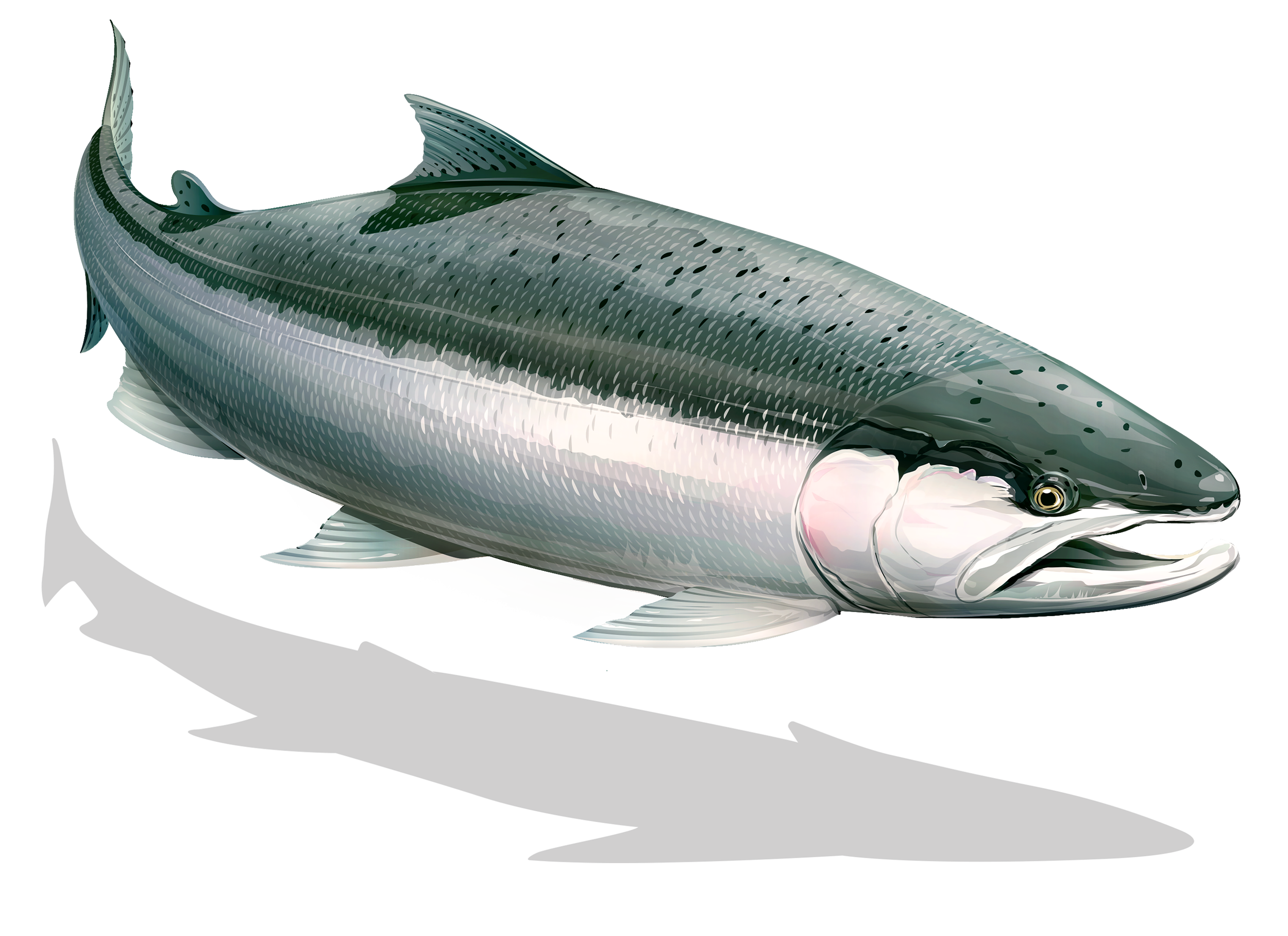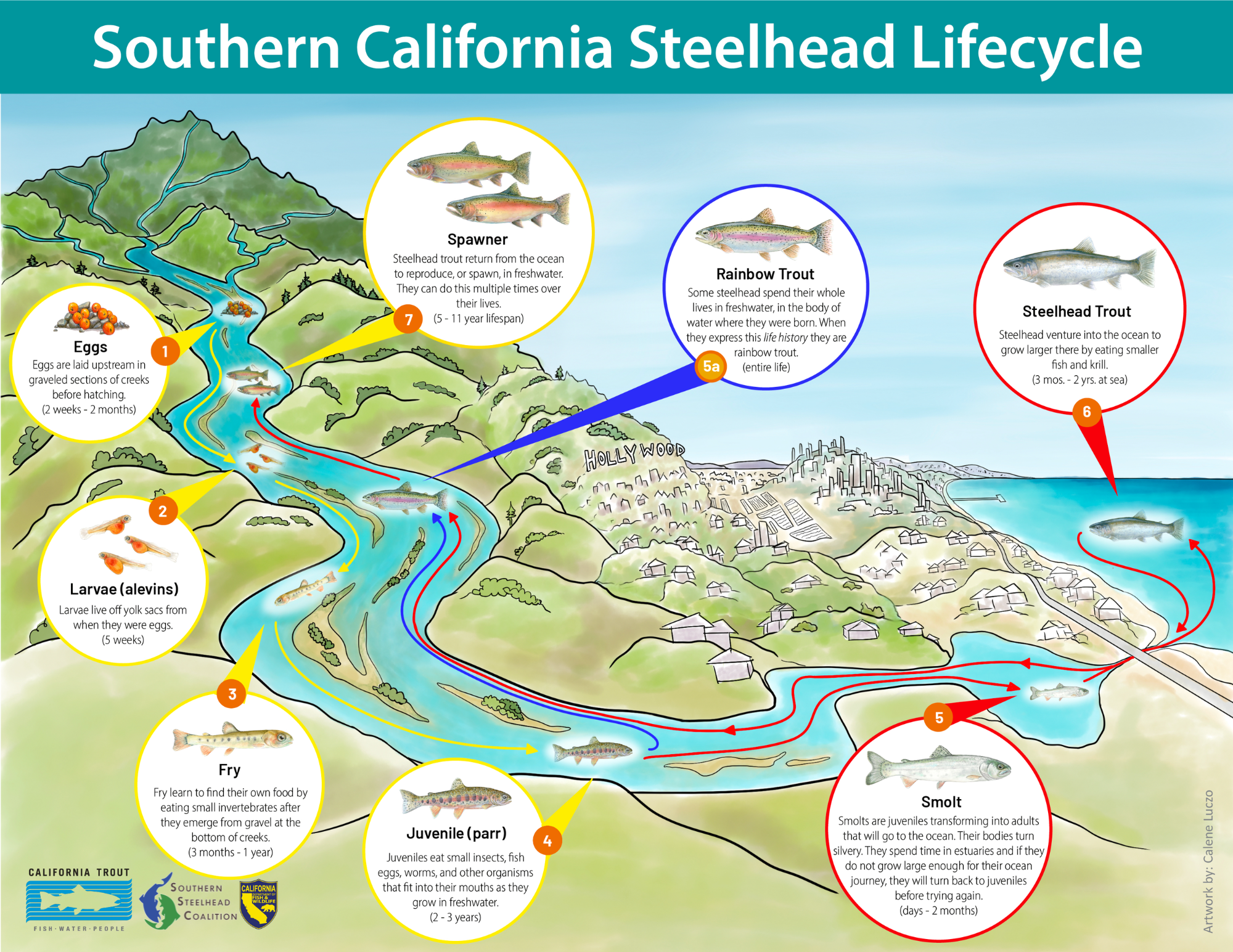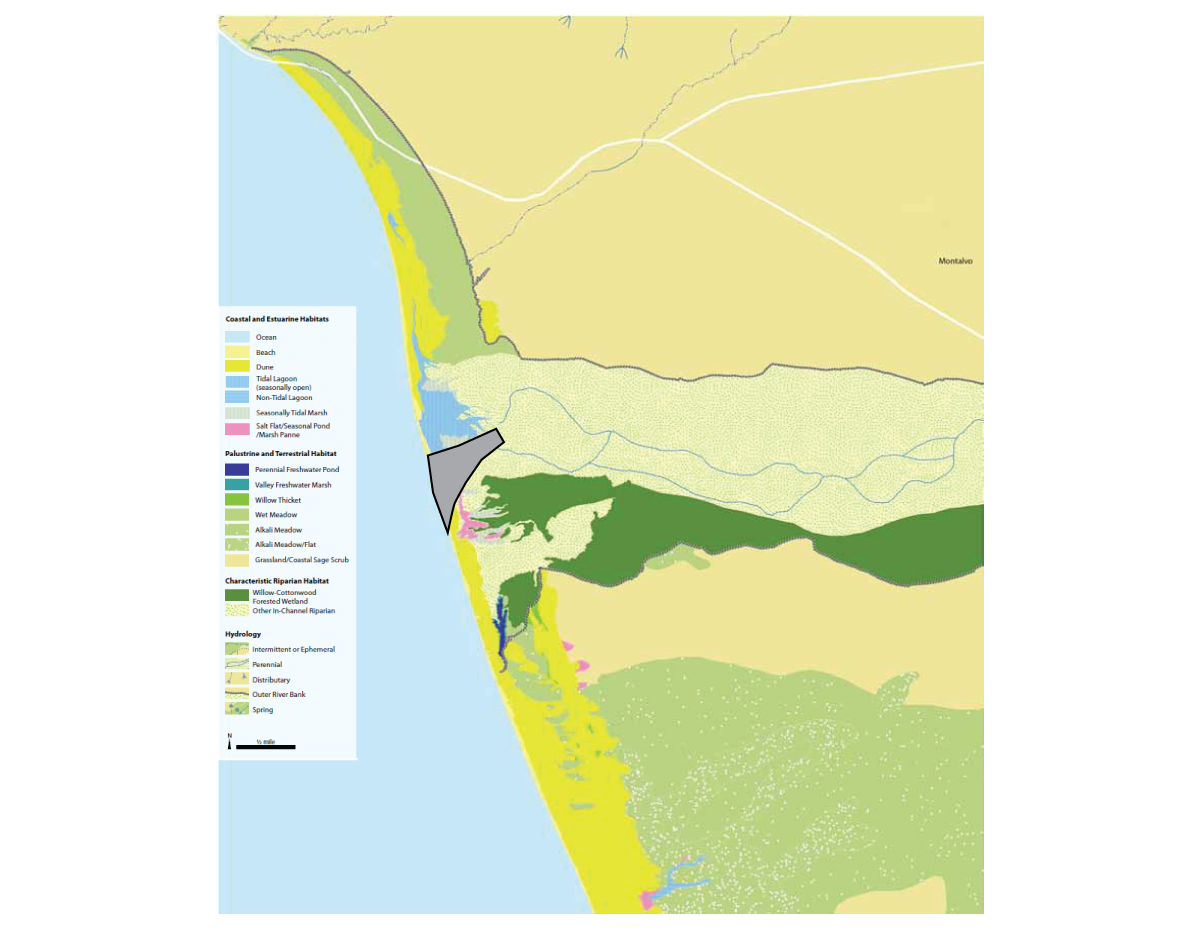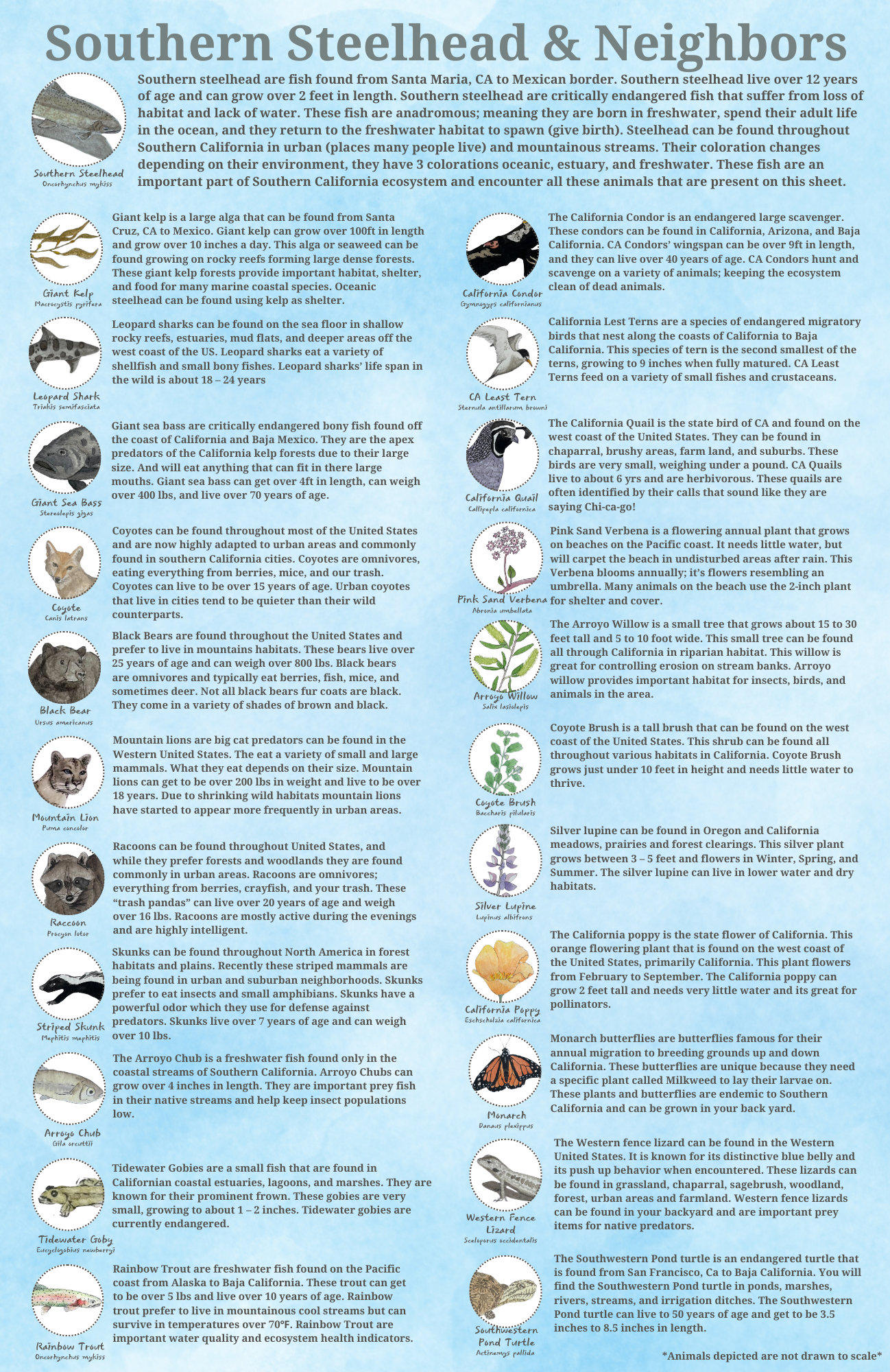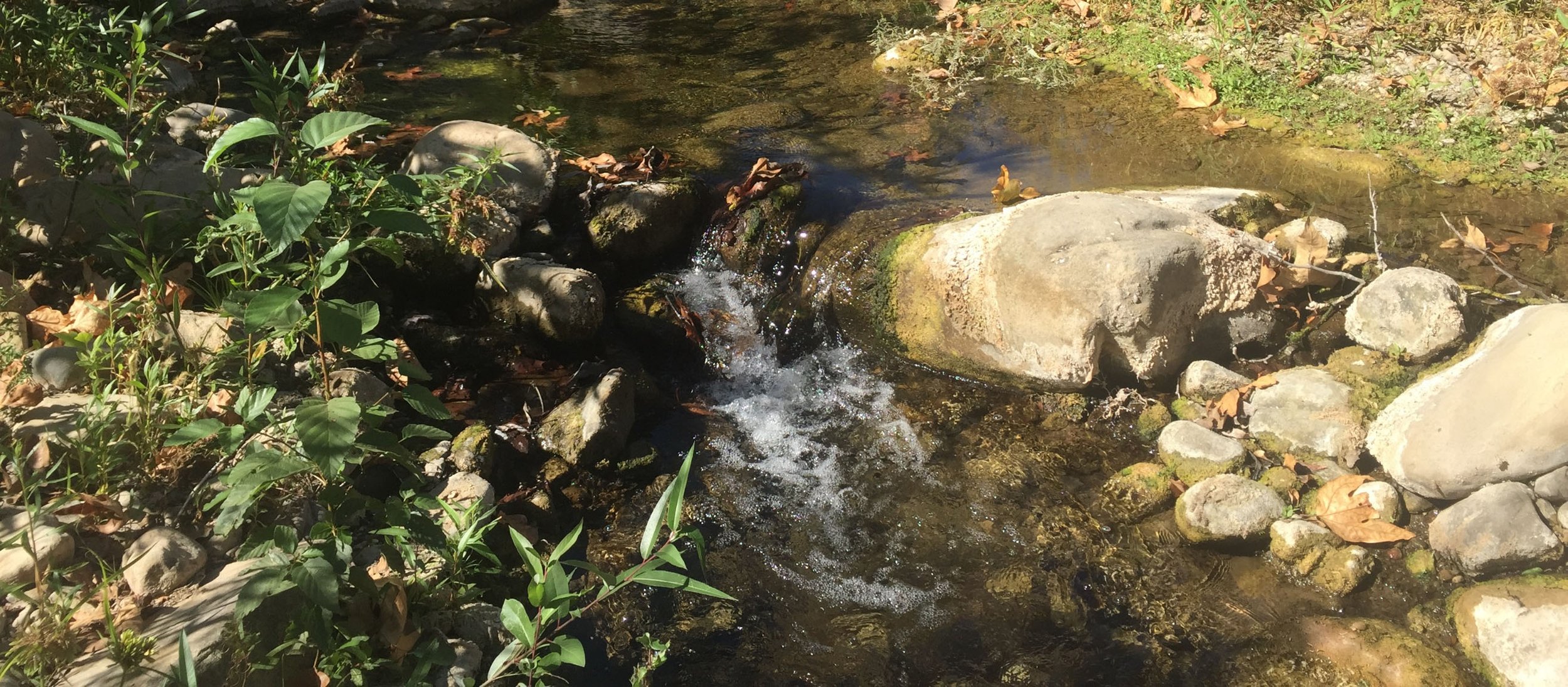
Southern Steelhead
Oncorhynchus mykiss irideus
Ocean-going form of rainbow trout
Southern Steelhead Life History - An Incredible Journey
Southern California rivers are naturally dynamic environments. Over eons, Southern California Steelhead evolved an incredible ability to take advantage of the shifting habitat mosaics present in these rivers. Southern Steelhead are anadromous fish - a fish that is born in fresh water, matures in the ocean, and returns to fresh water to spawn. Unlike Salmon Steelhead spawn more than once in their lifetime.
Their survival depends on a web of interconnected aquatic ecosystems. Because of this, they are the best indicator of watershed health. The interplay of habitat type, habitat condition, and the connectivity between habitats over time is paramount in their development and survival in the coastal watersheds of Southern California.
(Click Here for Southern Steelhead Lifecycle Handout)
(Click Here for Southern Steelhead Lifecyle Handout in Spanish)
An Expansive Coastal California Existence from the Santa Maria River to the Tijuana River
Southern steelhead's total historical range is from the Santa Maria River in the north to the Tijuana River in the South. Southern steelhead have been found to be ecologically different from other populations. Their range, because of this difference from northern populations, is identified as a Distinct Population Segment (DPS).
Starting their lives in the headwaters of Southern California coastal rivers and streams, they then reach out to the ocean to become adult Southern steelhead. Along the way, they utilize many different habitat types along the way.
It is important to recognize that rainbow trout and Southern steelhead are the same species. A rainbow trout completes its entire life cycle in freshwater aquatic ecosystems, never going to the ocean. A Southern steelhead is a fish that has expressed anadromy - or one that migrated to the ocean.
The how and why of when juvenile southern steelhead decide to head to the ocean to become adult southern steelhead is not completely understood. It is at this inflection point of their lives, where we can see the incredible adaptability of this species.

A Highly Adaptable Species
Within the DPS, there are 5 distinct bio-geographic population groups that take into account the differences in climate, hydrology, ecology, geology, geo-morphology, and all of the other factors that influence how a river looks, flows and evolves over time.
Southern steelhead are uniquely adapted to take advantage of a multitude of different habitat types. The exact location and condition of those habitats is determined by each individual river's natural flow regime.
Southern steelhead spend 1-3 years in the ocean as adults, typically return to their natal stream when estuaries open following winter rain events during November - March. In the headwaters, adults spawn in clean, aerated gravel beds. From incubation to out-migration, juvenile steelhead spend 1-3 years in freshwater habitats.
In the simplest manner, Southern steelhead need 4 things - habitat that is cool, clean, complex and connected from cradle to grave.
Southern Steelhead Habitats
Open Ocean Habitat
Ocean-going adult Southern steelhead require sufficient water quality, depth, cover, and marine vegetation.
The ocean-going phase of Southern steelhead's life history is not fully understood and is an area where more information and data collection must occur.

Estuary and Tidally-influenced Habitat
Estuary and lagoon habitats must provide Southern steelhead with good water quality and quantity, adequate cover and sufficient foraging opportunities.
The estuary must contain connected habitat types such as wetlands, side channels, substantial cover to support multiple different life stages. Estuary habitat is immensely important to the overall success of smolts and adult steelhead.
Mainstem Habitat
Effective mobility for juvenile, smolts (fish heading out to the ocean) and returning adult Southern steelhead requires mainstem river migration corridors that are free of barriers to their migration.
They must also minimize excessive risk of predation, have suitable water quality and provide enough in-stream flow for cover, shelter, and holding areas dependent on season and flow conditions.

Headwater Habitat
Freshwater spawning sites must provide suitable water quantity, quality and gravel beds.
Freshwater rearing habitat must provide connectivity to tributaries, floodplains and side channels.
Connectivity and complexity of habitats is essential for rearing and foraging. It can provide shelter from summer heat, allows them to find suitable foraging opportunities depending on their growth rates, or to avoid flood flows that are common to these rivers and streams.
The area in orange only captures a small portion of the potential available habitat that is considered headwater.
Loss of Habitat Access and Ecosystem Function
Since the early 1900's, we have witnessed a dramatic decline in the Southern steelhead population throughout their entire range.
Where there were once runs in the 10,000's of returning adults on major rivers in Southern California. Today there is only a few, if any that return to spawn.
Experts estimate that there may be LESS THAN 500 adult southern steelhead that exist on any given year.
The dramatic reduction in the adult steelhead population is the result of habitat loss, modification, and degradation from human land use decisions and management. This led to Southern steelhead being listed as endangered under the Endangered Species Act in 1997.
Currently, the Southern Steelhead population is under review by the State of California to determine if its current condition merits protection under the California Endangered Species Act. For
Southern steelhead need cool, clean, complex and connected habitat from the headwaters to the ocean to thrive and survive
To learn more about how to identify southern steelhead click this link.
Southern Steelhead & Neighbors In Our Backyards
Below you will find a nice breakdown of Southern steelhead and their ecological interactions in Southern California. Southern steelhead are important members of our wildlife communities and urban wildlife communities. Check below to see what you and Southern steelhead interact with in your neighborhood! (For the PDF click here!)


